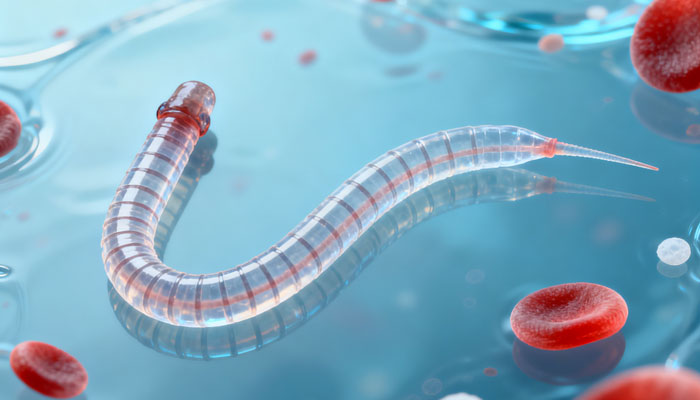Diagnosis and Treatment of Feline Heartworm Disease
I. Clinical Symptoms of Feline Infection
Clinical symptoms typically manifest 3–4 months post-infection, primarily triggered by larval migration to the pulmonary vascular system or adult worm death. Major clinical presentations include wheezing, coughing, dyspnea, and respiratory distress. Additional symptoms may include vomiting and neurological deficits. Since infected cats more commonly exhibit lower respiratory tract involvement rather than cardiac involvement, the term “Heartworm-Associated Respiratory Disease (HARD)” is frequently used clinically to describe this condition. Some infected cats may experience hyperacute episodes leading to sudden death, typically associated with adult worm death.
II. Diagnostic Methods for Feline Infection
Confirming feline infection poses challenges. Infected cats typically exhibit low worm burdens, often harboring only a single worm, and lack circulating microfilariae in the blood. Furthermore, circulating antigens or antibodies are frequently undetectable in most infected individuals. A positive result on commercially available canine heartworm IgG antibody lateral flow immunoassays may suggest canine infection but is not diagnostically conclusive. Clinically, radiography and echocardiography are considered effective for diagnosing feline heartworm disease. Heat treatment of blood samples prior to antigen testing may also aid in diagnosing suspected cases. Bronchoalveolar lavage fluid may reveal eosinophilic infiltration, a finding easily confused with allergic bronchitis (e.g., feline asthma, lungworm infection).
III. Treatment Principles and Protocols for Feline Infection
Unlike canine heartworm treatment protocols, macrolide antibiotics (e.g., milbemycin oxalate) are not recommended for infected cats. Currently, no drugs are approved for treating feline infections. Treatment is not advised for cats with confirmed infection but no clinical signs. However, owners should be informed about potential clinical manifestations and the risk of sudden death. Treatment should consist of supportive measures based on clinical signs: Cats with acute respiratory distress require intravenous corticosteroids (prednisolone 1 mg/kg twice daily; or dexamethasone 0.01-0.16 mg/kg intravenously or subcutaneously once daily for 3 consecutive days), combined with bronchodilators (e.g., terbutaline 0.1–0.2 mg/kg orally twice daily) and aminophylline 6.6 mg/kg orally twice daily or theophylline 4 mg/kg orally twice daily, supplemented with oxygen therapy [1]; For cats with radiographic evidence of pulmonary lesions and accompanying symptoms, prednisolone (1 mg/kg twice daily, tapered off) is recommended. All cats testing positive for heartworm infection require macrolide chemoprevention. Although successful surgical removal of heartworms from the right atrium has been reported, owners must be informed of the significant risks associated with this procedure.
admin
-
Sale!

Washable Pet Cooling Pad for Cats and Dogs
$10.99Original price was: $10.99.$9.99Current price is: $9.99. This product has multiple variants. The options may be chosen on the product page -
Sale!

Washable Cat Window Hammock Cooling Bed
$23.99Original price was: $23.99.$22.99Current price is: $22.99. -
Sale!

Tropical Amphibian Rainforest Tank, Lizard Cage
$38.99Original price was: $38.99.$36.99Current price is: $36.99. -
Sale!

Silent 4-in-1 Waterproof Charging Dog Hair Trimmer
$49.88Original price was: $49.88.$47.99Current price is: $47.99.
